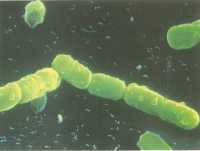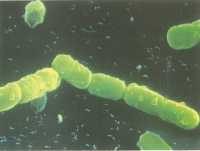
25 Sep Enzyme Key To Overcoming Antibiotic Resistance in Pseudomonas Infections
MedicalResearch.com Interview with:
 Dr Dorival Martins
Dr Dorival Martins
Department of Microbiology and Immunology
Meakins-Christie Laboratories, Research Institute
McGill University Health Centre
Montreal Canada.
MedicalResearch.com: What is the background for this study?
Response: Antibiotic tolerance, together with drug resistance, makes bacteria refractory to antibiotics and can cause treatment failure in subacute and chronic bacterial infections.
Pseudomonas aeruginosa, a major health concern worldwide, can cause severe chronic infections that are refractory to antibiotic treatments due to tolerance. Since the discovery of new antibiotics has been drastically diminished over the last decades, overcoming tolerance could be a strategy to enhance the efficacy of currently available antibiotic treatments. However, very little is known about the mechanism of tolerance, even though this phenomenon has been observed over 60 years ago.
MedicalResearch.com: What are the main findings?
Response: We discovered a new mechanism to explain how Pseudomonas aeruginosa develops antibiotic tolerance. This system involves an intricate interplay between stress pathways known to allow bacteria to survive under adverse environmental conditions, namely starvation (stringent response) and oxidative stress (superoxide dismutase), leading to changes in the membrane permeability. We found that starvation-driven antibiotic tolerance is mediated by superoxide dismutase activity, a well-established oxidative stress defence. The superoxide dismutase activity triggers changes in the bacterial membrane, leading to reduction in permeability which prevents antibiotics from entering bacteria and thus exerting their toxic effects.
We showed that by shutting down this system, we can make tolerant Pseudomonas aeruginosa bacteria become susceptible to antibiotics. When tolerant bacteria are exposed to antibiotics and don’t die, they also form a “breeding ground” for antibiotic resistant mutants to appear. We also found that inactivating superoxide dismutase activity could prevent the appearance of antibiotic resistant mutant bacteria.
MedicalResearch.com: What should readers take away from your report?
Response: Our results show how the function of the superoxide dismutase enzyme is important to antibiotic tolerance in Pseudomonas aeruginosa. This basic science discovery could guide the design of adjuvant therapies that bypass tolerance and thus potentiate antibiotic effectiveness in chronic infections.
MedicalResearch.com: What recommendations do you have for future research as a result of this work?
Response: Several questions remain to be answered in the basic and applied aspects of this study.
- The first is to determine what changes in the bacterial physiology are triggered by superoxide dismutase activity that culminate in the remodelling of the bacterial membrane.
- The second is to determine whether this tolerance mechanism is present in other clinically relevant species.
- The third is to look for molecules that can inhibit bacterial superoxide dismutase activity and/or increase membrane permeability, and explore them as adjuvant therapy to enhance currently available antibiotics.
Citation:
Proc Natl Acad Sci U S A. 2018 Sep 10. pii: 201804525. doi: 10.1073/pnas.1804525115. [Epub ahead of print]
Martins D1,2, McKay G2, Sampathkumar G1, Khakimova M1, English AM3, Nguyen D4,2,5.
[wysija_form id=”3″]
[last-modified]
The information on MedicalResearch.com is provided for educational purposes only, and is in no way intended to diagnose, cure, or treat any medical or other condition. Always seek the advice of your physician or other qualified health and ask your doctor any questions you may have regarding a medical condition. In addition to all other limitations and disclaimers in this agreement, service provider and its third party providers disclaim any liability or loss in connection with the content provided on this website.
Last Updated on September 25, 2018 by Marie Benz MD FAAD
